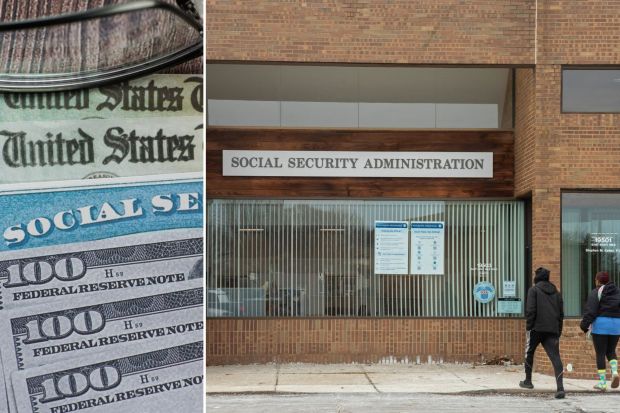A recent change by the Social Security Administration (SSA) has left some beneficiaries struggling to adjust their direct deposit information. The agency’s new regulation prevents online updates, mandating that recipients make in-person appointments to modify their account details. This shift has led to significant delays, with one beneficiary reporting a two-month wait to resolve their issue.
The SSA’s policy change aims to enhance security and combat fraud, particularly concerning direct deposit accounts. Fraudulent activities have been linked to phone-based changes in banking information, prompting the agency to encourage individuals to visit local offices for any necessary modifications. While the SSA cites the need for increased security, many recipients have voiced their frustrations regarding the new procedures.
In a recent post on Reddit, a beneficiary expressed their disappointment after attempting to redirect their Social Security direct deposits to a different bank account via the SSA’s website. The request was denied, requiring them to schedule an in-person appointment, with the earliest available time set for mid-October, approximately two months away. The user questioned the rationale behind the inability to make such a straightforward change online.
Responses from other Reddit users suggested possible explanations for the denial. One individual noted that if the beneficiary was due to receive their payment between August 25 and 29, the SSA may have blocked the change to prevent complications. The user explained that the system typically requires up to 30 days for updates, which might allow for changes the following week.
Another user highlighted that individuals receiving Supplemental Security Income (SSI) or Social Security Disability Insurance (SSDI) are often restricted from making online updates to their direct deposit information. They noted that if a direct deposit fraud block exists on a recipient’s record, online changes are not permitted. Furthermore, certain online banks, such as Chime and Green Dot, have been problematic for Social Security recipients trying to change their direct deposit information.
The SSA’s crackdown on fraud has also led to a reduction in its ability to process requests over the phone. Previously, beneficiaries could verify their identity through simple questions, but now, many must visit an SSA office in person if they cannot confirm their identity online. To improve the situation, the SSA is introducing an optional authentication PIN feature this month. This system will allow beneficiaries to authenticate their identity more securely when calling the SSA, enabling them to update their direct deposit information over the phone.
While the SSA addresses these operational changes, another significant update is on the horizon. Starting on September 30, 2025, the US Department of the Treasury will stop issuing paper checks to beneficiaries. This decision, confirmed by an executive order from the White House, aims to reduce costs and fraudulent activities associated with lost or stolen checks. The Treasury estimates that this switch will save approximately $750 million annually.
Beneficiaries will need to register for direct deposit or an alternative electronic payment method by the deadline to avoid interruptions in their payments. As the SSA continues to enforce its new policies, recipients are preparing for further changes expected in 2026.
As these developments unfold, beneficiaries are reminded to stay informed about their options and rights regarding Social Security payments. In the meantime, recipients can explore ways to supplement their Social Security income. Shannon Benton, executive director of the Senior Citizens League, recommends early savings and investing in retirement accounts such as 401(k)s or Individual Retirement Accounts (IRAs) to ensure financial stability in the future.






































































